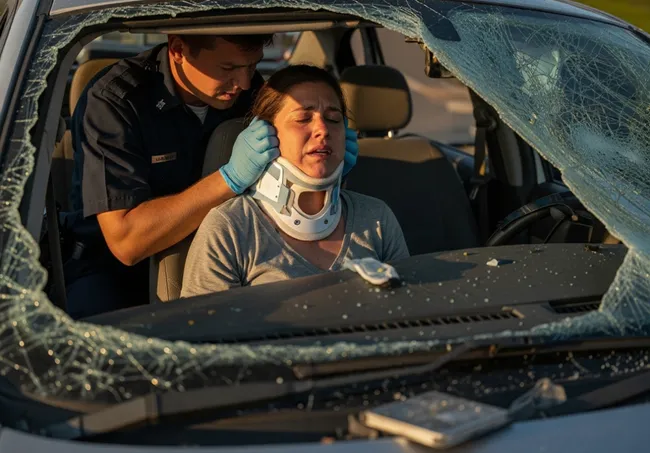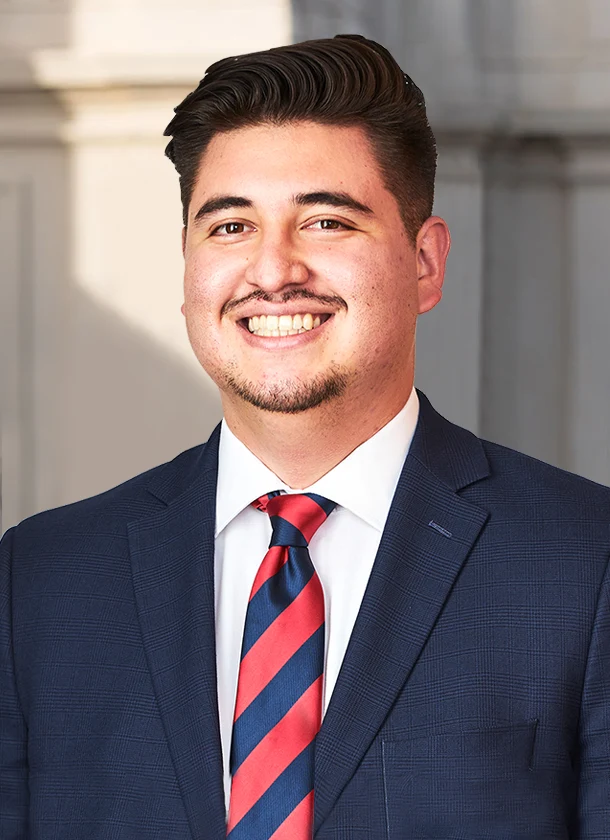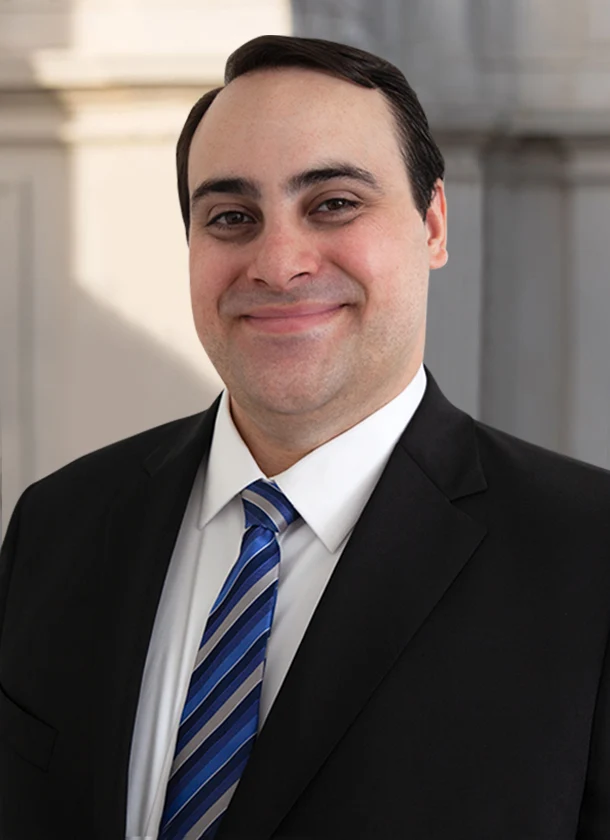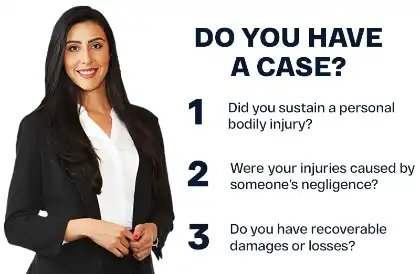California Spinal Cord Injury Lawyers
- PAY NOTHING UPFRONT
- OVER $0 MILLION RECOVERED
- ZERO-FEES UNTIL WE WIN
We’ll tell you if you have a case or not, call (888) 488-1391 — We’re here 24 hours a day.
Spinal Cord Injury Lawyers In California Dedicated To Protecting Your Legal Interests
When an accident results in damage to the spinal cord, the results can be devastating. Suppose you or a family member suffered a spinal cord injury. In that case, you may be able to file a claim and seek compensation for your expensive medical costs, pain and suffering, and disability. The California spinal cord injury lawyers at Arash Law can help you explore your legal options. You may contact us at (888) 488-1391 or by filling out our online form.
If you hurt your spinal cord, you may suffer permanent paralysis or loss of function below the point of injury, making it one of the most dangerous types of trauma to the body. Living with irreparable neurological damage is undoubtedly a daunting journey. The road ahead is filled with uncertainties, frustrations, and setbacks. Simple tasks once taken for granted may now require immense effort and assistance.
California boasts top-tier spinal cord rehabilitation facilities. There are long-term challenges to irreparable neurological damage. Nevertheless, there is still hope for individuals to make significant progress toward independent living. However, funding extensive care programs may only be feasible if the injury victim secures compensation from the negligent party responsible for the injury.
If you or a loved one has experienced a spinal cord injury, it’s important to understand your rights and options. Recovering from such an injury can be overwhelming, both emotionally and financially. Legal issues such as determining liability and negotiating with insurance companies can be confusing and time-consuming when you deal with them alone.
Arash Law, led by Arash Khorsandi, Esq., has experience handling spinal cord injury cases. Our California spinal cord injury lawyers can provide guidance on legal options. We can also assist with the claims process to help pursue potential compensation for injury-related losses.
Dedicated California Spinal Cord Injury Lawyers For Injured Victims
A spinal cord injury can significantly change your life, impacting specific bodily functions either temporarily or permanently, depending on the damaged vertebral segment. Seeking prompt medical attention from a specialist in spinal cord injuries is necessary for your physical recovery. However, medical costs, hospital bills, and other damages can strain your finances.
Among the many significant injuries we handle at Arash Law are traumatic spinal cord injuries (tSCIs). Our team of experienced California personal injury lawyers is committed to helping victims of negligent or wrongful acts pursue compensation under the law.
What Legal Help Can Our California Spinal Cord Injury Attorneys Offer?
Our California spinal cord injury attorneys are dedicated to helping you pursue compensation for economic and financial losses and general pain and suffering. We can handle communications with insurance companies and help assess the liability of the parties involved.
After a spinal injury, bladder control issues, mobility issues, pinched nerves, and other cervical problems may arise. These may require long-term medical care. Some cases may need specialized treatments, therapy, and devices to assist you with your disabilities.
With experience assisting clients with severe injuries across California, we know how to handle your case. While you focus on your rehabilitation and health, we can help gather evidence, assess liability, and guide you through the personal injury claims process. You can share the details of your case with our spinal cord injury lawyers.
Why Work With Our Lawyers After A Spinal Cord Injury In California
Severe spinal cord injuries can stem from accidents caused by negligent individuals. Legal guidance can help you understand your options and navigate the claims process, including interactions with insurers and other parties involved.
At Arash Law, our California spinal cord injury attorneys can provide information about the personal injury process and help assess the details of your case. We offer a free initial consultation and work on a contingency basis, meaning there are no upfront attorney fees. You can ask about our fee structure during your consultation, and one of our lawyers will explain it clearly before you decide how to proceed.
The Anatomy Of A Spinal Cord Injury
Extending from the neck to the tailbone, the spinal cord is a bundle of nerves within the spinal column or “backbone,” safeguarded by individual vertebrae in the neck, mid-back, and lower back. Like the brain, the spinal cord is shielded by three layers of tissue and enveloped in cerebrospinal fluid (CSF), providing a protective cushion for the spinal cord against shock or injury.
The spinal cord forms a network regulating muscle movement, sensory perception (such as touch), and other bodily functions. Specific spinal nerves control signals to various body regions:
- Cervical spinal nerves (C1 to C7) in the neck govern signals to the back of the head, neck, shoulders, arms, hands, and diaphragm.
- Thoracic spinal nerves (T1 to T12) in the upper mid-back regulate signals to chest muscles, some back muscles, and multiple organ systems.
- Lumbar spinal nerves (L1 to L5) in the lower back manage signals to the lower abdomen, back, buttocks, external genital organs, and parts of the leg.
- Sacral spinal nerves (S1 to S5) in the lower back control signals to the thighs, lower legs, feet, and parts of other lower extremities.
Spinal cord injuries typically result from an impact on the spine, which then causes damage to the spinal cord or nerve roots. The injury’s location and severity dictate its impact. Severe damage in the neck region may lead to quadriplegia and complete loss of control over arms and legs. Injuries lower on the cord may result in paraplegia and paralysis of the lower body. Those with less severe injuries may retain some sensation or muscle control, but these injuries still demand rehabilitation.
Spinal Cord Injury Statistics
The U.S. population stands at approximately 340 million people. According to the 2023 data from the National Spinal Cord Injury Statistical Center, the annual incidence of traumatic spinal cord injury (tSCI) is estimated at around 54 cases per one million people in the United States, resulting in approximately 18,000 new tSCI cases each year. This figure excludes cases where individuals succumbed to injuries at the incident location. The estimated number of people living in the United States with tSCI is approximately 302,000 persons, ranging from 255,000 to 383,000 persons.
Vehicle crashes are the leading cause of injury, closely followed by falls. Individuals in automobiles face the risk of tSCI from high-impact or rear-end collisions and accidents involving trucks, buses, and other large vehicles. Motorcycle and bicycle riders, due to their exposure and lack of external protection, are particularly susceptible to SCI and other severe injuries. Acts of violence, primarily involving gunshot wounds, and sports/recreation activities are also relatively common causes.
Since 2015, about 30% of persons with tSCI have been re-hospitalized one or more times annually following injury. Among those re-hospitalized, the average hospital stay is approximately 18 days. The average remaining years of life for persons with tSCI have not shown improvement since the 1980s and remain significantly below the life expectancies of individuals without tSCI. Mortality rates are notably higher in the first year after injury, particularly for individuals with the most severe neurological impairments.
Arash Law provides legal services for spinal cord injury cases in California. Our experienced personal injury attorneys can review your case and explain the legal process. We also offer guidance on addressing the physical, emotional, and financial impacts of an SCI.


Common Causes Of Spinal Cord Injury (SCI)
The spinal cord comprises three distinct sections, namely the cervical, thoracic, and lumbar segments. Medical conditions, particularly those like osteoporosis that weaken the bones, can increase the susceptibility to spinal cord injuries. Individuals diagnosed with such illnesses are more prone to sustaining SCIs compared to those without such health conditions.
Damage to the spinal cord can lead to various outcomes, depending on the location and extent of the injury. The common factors that may have contributed to SCI are as follows:
- Auto Accidents — High-speed collisions can cause trauma to the spine. Impact forces can lead to fractures, dislocations, or compression of the spinal cord. Whiplash or direct impact can damage the cervical (neck) or thoracic (upper back) segments.
- Motorcycle Accidents — Motorcyclists are more exposed to direct impact. Accidents can result in the rider being thrown off the bike, which may lead to spinal cord trauma upon landing. Injuries often occur in the cervical or thoracic regions due to the nature of motorcycle accidents.
- Bus Accidents — Bus accidents can involve significant forces. Passengers may be thrown within the bus or experience impacts during a collision.
- Truck Accidents — Due to the size and weight of trucks, accidents involving trucks can result in severe trauma. The force of impact can cause SCIs. Injuries may range from cervical to lumbar segments.
- Slip, Trip, and Fall Accident — Falls, especially from heights or on hard surfaces, can lead to spinal cord injuries. This kind of incident frequently occurs among older people. With advancing age, bones tend to become more delicate, making walking challenging without relying on a cane for stability. Additionally, deteriorating vision can complicate the identification of nearby objects or hazards, increasing the risk of slipping and falling.
- Sports Accidents — High-impact sports or accidents during athletic activities can result in spinal cord injuries. Engaging in sports like football or hockey involves significant physical contact. If an opponent explicitly targets your back, the severity of the impact determines the potential for such an injury.
- Airport Accidents — Accidents during travel, such as falls on slippery floors or luggage-related incidents, can lead to spinal cord injuries. Injuries may occur in any segment of the spine, depending on the nature of the accident.
- Elder Abuse — Physical abuse or neglect of elders can result in injuries, including spinal cord trauma.
- Assault, Battery, Rape — Physical assaults can involve direct trauma to the spine, which can result in spinal cord injuries. Injuries may be intentional and can affect any part of the spinal column. Gunshot wounds or knife stabbings aimed at the spinal area can lead to either a complete or incomplete injury. The likelihood of paralysis depends on the specific region of the spine affected by the impact of the gunshot or stabbing.
Arash Law provides legal representation to those injured due to another person’s careless actions. Our attorneys understand the common causes of injuries to the spine. We provide guidance and support to clients dealing with serious spinal injuries.
What Are The Symptoms Of Spinal Cord Injuries?
Like the human brain, the spine cannot regenerate cells. Immediate symptoms and delayed effects may accompany a spinal cord injury. Common signs include:
- Numbness — This is a lack of sensation or feeling in a particular part of the body. It occurs when the communication between the nerves in the affected area and the brain is disrupted due to trauma to the spinal column.
- Limited Mobility — Spinal cord injuries can impede the ability to move certain body parts, leading to restricted mobility. This limitation can range from difficulty in simple movements to the inability to use specific limbs.
- Issues with Balance — The spinal cord is responsible for transmitting signals related to balance and coordination. These signals may be disrupted when injured, causing difficulty in maintaining a stable and upright posture.
- Migraines — While not a direct symptom of SCI, migraines can be associated with the stress, pain, or changes in sensory perception that may accompany such injuries. Individuals with back injuries may be more prone to headaches and migraines.
- Chronic Pain — Injuries in the spinal column often result in persistent pain that can be localized or spread across the affected area. The pain may be sharp, dull, radiating, or throbbing and can significantly impact the individual’s quality of life.
- Paralysis — This refers to the partial or complete loss of muscle function and control in specific parts of the body. The extent of paralysis depends on the severity and location of the injury. Paralysis can affect limbs, the torso, or even the entire body, depending on the level of the spinal cord.
- Breathing Problems — SCIs, particularly those higher on the spinal cord, can impact the nerves responsible for controlling the muscles involved in breathing. This may lead to difficulties in breathing or the need for respiratory assistance, emphasizing the critical role the spinal cord plays in the respiratory system.
- Loss of Bladder or Bowel Control — The spinal cord transmits bladder and bowel function signals. When damaged, these signals may be disrupted, resulting in a loss of control over urination and bowel movements. This loss of function can significantly impact daily life and necessitate adaptive strategies for managing these bodily functions.
- Loss of Sexual Functions (Sexual Dysfunction) — SCIs can affect the nerves that control sexual function. This may lead to difficulties in arousal, sensation, or achieving and maintaining an erection or reaching orgasm. The impact on sexual functions varies depending on the level and severity of the injury, and addressing these changes is an essential aspect of overall care and rehabilitation.
What Makes Spinal Cord Injury Complicated?
Spinal cord injury (SCI) disrupts body structures and functions, including neurological damage and the loss of motor, sensory, and autonomic functions. These disruptions significantly impede independence in daily activities such as self-care and mobility. Newly injured individuals face additional risks of complications like pressure injuries and cardiovascular issues during the acute care and initial rehabilitation phases.
According to a study published in 2020, rehabilitation success is determined by several factors, including the cause of the injury and sociodemographic considerations. While depression has been identified as a factor influencing outcomes, its specific impact on the intricate relationship between body structures, functions, and activities remains unexplored.
SCI presents a highly complicated functioning profile. Understanding how health conditions relate to various aspects of functioning can significantly help create personalized rehabilitation plans that cater to the specific needs of individuals dealing with SCI.
What Should I Do If I Have A Spinal Cord Injury From An Accident?
Whether you find yourself assisting someone with a spinal cord injury or you are the person injured, knowing how to respond in those crucial moments can make a significant difference. Here are some recommended steps to minimize further harm:
- Remain Calm — Stay as calm as possible to manage the situation effectively. Controlled emotions help create a more focused and organized response.
- Avoid Unnecessary Movement — Refrain from moving unless it is necessary. Any unnecessary movement may worsen the spinal cord injury. If assistance is needed, communicate this.
- Communicate Clearly — If conscious, provide precise details about the incident. Share any sensations, pain, or numbness experienced. This information is valuable for medical professionals.
- Cooperate — Allow others to keep your head and neck still. Follow their instructions to secure and maintain proper spinal alignment. Resisting movement aids in preventing further injury.
- Take Normal Breaths — Focus on breathing normally. If you experience difficulty breathing, communicate this to those assisting you. Proper breathing is important for overall well-being.
- Keep Your Protective Gear — If wearing helmets or protective gear, request that it not be removed unless there are airway issues. This equipment can provide support and protection.
- Report Bleeding — If you’re bleeding, report it to those assisting you. Allow them to apply gentle pressure using a clean cloth or bandage. Avoid attempting to address it yourself.
- Elevate Your Legs — If possible and safe, allow your legs to be elevated slightly. This aids in improving blood circulation and reducing the risk of shock. Elevate them gently to avoid additional strain.
- Wait for Professional Help — Patiently wait for medical professionals to arrive. Avoid attempting any medical procedures unless directed by trained personnel. Use this time to focus on maintaining composure.
After implementing all necessary preventive measures and administering initial first aid for your spinal cord injury, you may also consider the following steps for pursuing a personal injury claim:
- Gather Your Medical Records — Take the time to compile a file containing all the medical records related to your spinal cord injury. While you don’t need to collect everything, include as much relevant information as possible.
- Take Detailed Notes — Document every detail you can recall about the accident. Additionally, record pertinent details concerning the day-to-day effects of your injury. Prepare a list of questions to discuss with your personal injury lawyers.
- Consult with California Spinal Cord Injury Lawyers — To determine the strength of your claim for financial compensation, it is advisable to consult with experienced California spinal cord injury lawyers.
- Avoid Direct Communication With Insurance Adjusters — At this stage, refrain from engaging directly with any insurance adjusters. If contacted, take note of their contact information, convey that you are seeking legal counsel, and inform them that your lawyers will be in touch shortly.
We understand that dealing with your situation can be challenging. Seeking legal guidance is important. Our California spinal cord injury attorneys can discuss your case and discuss the potential next steps.
Who Is Liable For My Spinal Cord Injury In California?
Spinal cord injuries frequently result from negligence, whether it’s a reckless driver causing a car accident or a product manufacturer producing a defective item. Regardless of the specifics, establishing legal responsibility is important when pursuing a lawsuit.
You can file a lawsuit against the other driver and their insurance company for a car accident. In the case of a defective product, potential targets for legal action include the product manufacturer, its components, or the store where the product was bought.
A spinal cord injury can have serious and lasting effects. If another party is responsible for your injury, consulting an experienced spinal injury attorney in California can help you. They can explain your legal options and assist you with the personal injury process.
What Compensation Can I Pursue After My Spinal Cord Personal Injury Claim In California?
In California, personal injury lawsuits offer three types of compensation: economic, non-economic, and punitive damages. The aim is to restore the plaintiff to their pre-spinal cord injury state. Compensatory damages, whether economic or non-economic, are intended to aid injured parties financially.
There are several types of economic damages:
- Medical Bills — This includes the costs incurred for medical treatment, hospitalization, surgeries, medications, rehabilitation, and any other healthcare-related expenses directly resulting from the spinal cord injury.
- Property Repair — In cases where property (e.g., vehicles) is damaged in an incident, economic damages can cover the expenses associated with repairing or replacing the damaged property.
- Lost Income — Economic damages account for any income lost by the injured party due to the inability to work, attend their job, or pursue their profession as a result of the spinal cord injury.
- Physical Therapy — The costs associated with physical therapy and rehabilitation for spinal cord injuries fall under economic damages. This includes expenses related to sessions, equipment, and any specialized therapies needed.
- Household Expenses — Economic damages extend to cover the additional expenses incurred for household assistance or modifications necessitated by the spinal cord injury. This can include hiring help for daily tasks the injured person can no longer perform independently or making structural changes to the home for accessibility.
Non-economic damages address the mental and emotional toll of spinal cord injuries, compensating for intangible losses like:
- Pain and Suffering — This includes the physical and emotional distress experienced by the individual as a result of the spinal cord injury. It comprises the overall discomfort, agony, and suffering from the injury and its consequences.
- Mental Anguish — Non-economic damages also account for the emotional and psychological impact of the spinal cord injury, addressing feelings of anxiety, depression, stress, and other mental health challenges that may arise as a result of the injury.
- Physical Impairments — In non-economic damages, physical impairments refer to the limitations, disabilities, and alterations to the individual’s physical capabilities resulting from the spinal cord injury. This refers to any permanent or long-term changes to bodily functions and mobility.
- Reduced Quality/Enjoyment Of Life Or Harm To Relationships — Non-economic damages are considered intangible losses related to the individual’s overall quality of life and enjoyment. There are limitations in daily activities, hobbies, and general life satisfaction. Additionally, harm to relationships, including loss of consortium (harm to spousal and family relationships), is considered part of these damages.
Unlike compensatory damages, punitive damages aren’t intended to compensate the injured party but rather to punish the defendant for particularly reckless behavior. Courts rarely grant punitive damages, such as when the negligent party knowingly commits reprehensible acts, serving as a warning for future misconduct. An example could be someone purposefully driving drunk and causing a severe spinal cord injury.
At Arash Law, our spinal cord injury attorneys can assess all damages and help clients pursue compensation for their injuries and losses. Remember, results depend on the specific facts and evidence of each case and are not guaranteed.
Is A Spinal Cord Injury Permanent?
Spinal cord injuries often have permanent consequences. Many of these injuries result from the negligence of others, such as distracted drivers in car accidents or unsafe conditions overlooked by businesses, resulting in slip-and-fall incidents.
Arash Law’s spinal injury attorneys in California can provide guidance on legal options and the personal injury process. You can contact us to discuss your situation or request a case review to learn more about how we may assist.
How Long Does It Take For A Spinal Cord Injury To Heal?
Following a spinal cord injury, there is typically swelling, impacting various body systems. As the swelling subsides over days or weeks, individuals may experience some recovery. For many, especially those with incomplete injuries, functional improvement can occur up to 18 months post-injury. In rare cases, individuals may regain function years later, but full recovery is uncommon after a spinal cord injury.
Despite promising research into spinal cord injury (SCI) cures, there’s currently no method that can fully restore function. However, this doesn’t rule out the possibility of recovery. While there are no guarantees, there’s often hope for improvement.
Here are some general guidelines:
- Individuals with a complete injury often regain control over 1 or 2 levels of muscle movement.
- Those with an incomplete injury are more likely to regain control over more muscle movement, but the extent is uncertain.
- The chances of an overall improvement are better if continuous improvements are made, such as regaining muscle movement.
- Conversely, prolonged periods without improvement may reduce the likelihood of future progress.
What Makes Spinal Cord Injuries Difficult To Treat?
The spinal cord, an important part of our nervous system, is a complex structure of nerve cells and supporting cells. When injured, the damaged cells cannot regenerate at all. Additionally, there isn’t a single recovery solution; instead, a combination of therapies is needed to create the best conditions for healing and regeneration.

How Should Spinal Cord Injury Victims Protect Their Right To Pursue Compensation In California?
Experienced spinal cord injury attorneys can help establish fault and protect your right to seek compensation. Here’s what’s needed to establish fault in a spinal cord injury case:
- The plaintiff must demonstrate that their spinal cord sustained an injury.
- The plaintiff needs to prove that the spinal cord injury resulted from someone else’s negligent or intentionally wrongful actions, indicating a disregard for safety.
- A pre-existing condition did not cause the spinal cord injury.
Any party whose negligence contributes to the spinal cord injury may be held accountable for damages. This could include a driver causing an accident under the influence, a manufacturer of a hazardous product, or a property owner where a slip-and-fall incident occurred.
Skilled California spinal injury lawyers can help assess the details of a case and guide you through the personal injury process. Arash Law can provide information and support so you can focus on your recovery.
Grounds For California Spinal Cord Injury Lawsuits
There are many different ways the spinal cord can sustain an injury. The most common cause is motor vehicle accidents, followed by falls, acts of violence, and sports activities. After a spine injury, victims may wonder whether they have the right to file a claim against one or more parties for the incident. Several legal outlets may offer this opportunity.
Here are the three most common grounds for filing spinal cord injury suits:
Negligence
Car accidents, medical malpractice, or sports injuries are all examples of negligence-related causes of spinal cord injuries. In a negligence-based case, the victim must prove that the defendant breached a duty of care and that this mistake caused the spinal cord injury. The defendant could be a distracted driver who caused a crash, a surgeon who made an error on the operating table, or another party whose negligence contributed to the injury.
Product Liability
Defective and dangerous products can cause spinal cord injuries in a variety of ways. If a defective product, such as a malfunctioning seatbelt, caused a spinal cord injury, the victim may have a claim against the product manufacturer or distributor. To prove a product liability claim, the victim must only show that the product was defective and that it caused the injury. There is no requirement to prove negligence in these cases.
Premises Liability
Unsafe premises have hazardous conditions, such as a shallow swimming pool with no warning sign, a ditch or hole, an unsafe staircase, escalator, or elevator, or inadequate security, leading to an assault. It is a property owner’s duty to keep premises free from hazards. If you tripped and fell or otherwise sustained a spinal cord injury on someone else’s property due to this type of liability, you may have this type of claim.
To help file any of these types of claims, you may consult a personal injury law firm. California spinal cord injury lawyers can provide guidance on your legal options.
Frequently Asked Questions
How Much Compensation Can I Expect From My Spinal Cord Injuries In California?
If you’ve suffered from spinal cord injuries, the value of your injury settlement depends on critical factors:
- Nature and Severity of Injuries — The seriousness of your vertebral injuries can affect the overall assessment of a claim. Fractures are generally considered more severe than strains or sprains and may involve extended treatment and recovery.
- Return-To-Work Capability — The settlement value is impacted if your vertebral injuries prevent your return to work or earning wages. Longer periods of work absence can influence the considerations involved.
- Medical Expenses — The financial impact of medical bills following a spinal injury is factored into the settlement. This includes surgeries, prescription drugs, medical equipment, therapy, and ongoing care costs.
- Disability Impact — Injuries that result in a disability, especially one affecting work or daily activities, are important to consider in the claim evaluation.
- Negotiation Skills of Your Personal Injury Attorneys — The knowledge and negotiation skills of personal injury attorneys can assist in presenting the case and supporting the claims process.
Skilled California spinal injury attorneys can help you manage the legal process, considering the unique aspects of each case.
How Much Do California Spinal Cord Injury Lawyers Charge?
Arash Law operates on a contingency fee basis, which means attorney fees are only collected if the client receives compensation. Your spinal injury lawyer’s fees come from the amount recovered through your insurance claim or lawsuit, so you do not have to pay up front. If no recovery is obtained, you are not charged for attorney fees.
These details will be clearly discussed with you during your consultation, so you understand the fee structure before moving forward with your case.
How Long Are People With Spinal Cord Injuries Likely To Live?
Every spinal cord injury is unique, with factors like where and how severe the injury is playing a significant role in the outcome. This makes predicting life expectancy tricky, as it varies widely, much like in the general population. It’s important to know that our understanding of this is constantly changing with medical advancements.
Although there have been improvements in survival rates due to better medical care, the life expectancy after a spinal cord injury is still generally lower than that of those without such injuries. The extent of neurological damage is a significant factor in how long someone might live after a spinal cord injury.
Many common causes of death in people with spinal cord injuries can be well managed with good rehabilitation, medical care, and nursing attention.
Contact Our California Spinal Cord Injury Lawyers
When calculating non-economic damages, such as lost quality of life, the courts will examine the full impact the injury has had on the victim’s life. If you have suffered damages due to a spinal cord injury, you can reach out to our California lawyers to discuss your case and schedule a free initial consultation.
Our team at Arash Law has experience in handling car crash cases, as well as claims involving complex traumatic brain injuries and catastrophic accidents. With decades of experience handling spinal cord injury cases, our spinal cord injury attorneys in California can determine your legal options accordingly. We can also deal with insurance companies and other parties involved.
Arash Law offers its services in a variety of California cities, including major ones like Los Angeles, San Jose, San Francisco, Sacramento, San Diego, Bakersfield, Fresno, Anaheim, Riverside, San Luis Obispo, Santa Ana, Oceanside, Santa Rosa, Glendale, Fremont, San Bernardino, and Visalia.





















